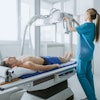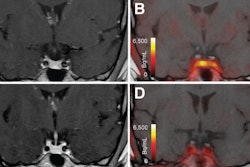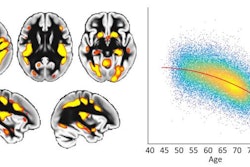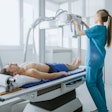Dear AuntMinnie member,
In the first decade of the 21st century, medical imaging was considered by some to be a significant contributor to the surge in overall U.S. healthcare spending. To curb imaging growth, concerted efforts were made to lower prices and decrease utilization in low-value applications.
These initiatives have apparently had an impact, as imaging’s share of total healthcare spending dropped from 10.5% in 2010 to 8.9% in 2021, according to new research we’re featuring this week. How was the decrease achieved? Click here for the details.
If you’re wondering how radiology was affected by the recent changes to the Medicare Physician Fee Schedule (MPFS), we’ve got you covered. Sandy Coffta of Healthcare Administrative Partners has provided a detailed breakdown in a new column.
Additionally, we’ve published the first in a series of feature articles tracking the rise of theranostics. In Part 1, learn more about how the combination of diagnostics and therapeutics is gaining momentum.
Cardiac PET/CT is emerging as a key tool for coronary arteries, according to another popular article and podcast this week on AuntMinnie.com. Learn how the modality is poised to have a significant clinical impact by clicking here.
In a study involving over 4,000 patients, researchers concluded that structural MRI measurements were predictive of fatigue severity in patients with multiple sclerosis. And large language models do a solid job of simplifying radiology report impressions for patients, according to recent research.
Cryoablation was also shown to be an effective treatment for women with breast cancer. Finally, we’ve got a feature for you on the expanding use of forensic imaging.
- Study finds decreases in imaging’s share of all healthcare spending
- How are radiology practices impacted by annual changes to the MPFS?
- The rise of theranostics: Part 1 – Gaining momentum
- Can cardiac PET/CT ‘revolutionize’ heart care?
- MRI findings predict multiple sclerosis fatigue severity
- Large language models simplify radiology report impressions
- Radiologists, RTs, and the art of forensic imaging
- Patient access to imaging reports faster post-Cures Act enactment
- Industry payments to radiologists total $392M
- PET/MRI may improve diagnosis of Cushing disease
- MRI reveals effects of risk factors on vulnerable brain regions
- Deep learning helps distinguish benign vertebral fractures on CT
- How underrepresented are women in radiology?
- How has virtual interviewing impacted residency matches?



















